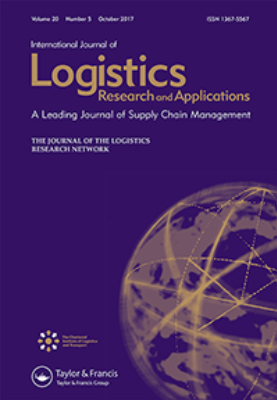供应链弹性:新的挑战和机遇
IF 4.5
3区 管理学
Q1 MANAGEMENT
International Journal of Logistics Research and Applications
Pub Date : 2023-10-06
DOI:10.1080/13675567.2023.2262396
引用次数: 0
摘要
摘要考虑到全球供应链的紧密协作、复杂性的增加和地理分布的扩大,供应链的不确定性和风险仍然是构建弹性供应链的关键管理挑战。从这个角度出发,本研究对近十年来现有的供应链弹性相关研究进行了结构化的文献综述。在问题导向和方法驱动的维度上,给出了一般性的描述性分析和深入的内容分析,描述了构建弹性供应链的研究进展。然后,遵循“为什么-什么-如何”的逻辑,重新审视aaa(一致性,敏捷性和适应性),Triple-P(产品复杂性,流程复杂性和伙伴关系复杂性)和Triple-R(准备度,响应性和恢复)框架,以整理全球供应链弹性发展的挑战和研究差距。最后,提出了一个广义框架,并讨论了未来发展的研究机会。关键词:供应链弹性lraaa框架3p框架triple - r框架作者衷心感谢编辑和匿名审稿人对本文提出的建设性和重要的意见。本文受国家社会科学基金重大项目(资助号:22&ZD139)资助。公开声明作者未报告存在潜在利益冲突。注1维度包括(1)叙述性文献综述(NLR)、系统性文献综述(SLR)、模型/概念框架(CM/CF)和理论贡献(TC)。项目资助:国家社会科学基金重大项目[批准号22&ZD139]。本文章由计算机程序翻译,如有差异,请以英文原文为准。
Supply chain resilience: new challenges and opportunities
ABSTRACTConsidering the tighter collaboration, increased complexity and ever-wider geographic dispersion in the global supply chain, supply chain uncertainties and risks remain a key managerial challenge to build a resilient supply chain. From this perspective, in this study, a structured literature review on extant studies related to supply chain resilience in the past decade is conducted. Given a general descriptive analysis and an in-depth content analysis in terms of problem-oriented and methodology-driven dimensions, the research progress for building resilient supply chains is depicted. Then, following a ‘why-what-how’ logic, revisiting of the Triple-A (alignment, agility and adaptiveness), Triple-P (product complexity, process complexity and partnership complexity) and Triple-R (readiness, responsiveness and restoration) frameworks are conducted to sort out the challenges and research gaps for the development of supply chain resilience across the globe. Finally, a generalised framework is proposed and research opportunities for future development are discussed.KEYWORDS: Supply chain resilienceSLRTriple-A frameworkTriple-P frameworkTriple-R framework AcknowledgementsThe authors sincerely thank the editor and the anonymous reviewers for their constructive and important comments on the paper. This paper is supported by Major Program of the National Social Science Foundation of China (grant number 22&ZD139)Disclosure statementNo potential conflict of interest was reported by the author(s).Notes1 Dimensions include (1) narrative literature review (NLR), systematic literature review (SLR), model/conceptual framework (CM/CF) and theoretical contribution (TC).Additional informationFundingThis work was supported by Major Program of the National Social Science Foundation of China: [Grant Number 22&ZD139].
求助全文
通过发布文献求助,成功后即可免费获取论文全文。
去求助
来源期刊
CiteScore
13.70
自引率
9.10%
发文量
71
期刊介绍:
International Journal of Logistics: Research & Applications publishes original and challenging work that has a clear applicability to the business world. As a result the journal concentrates on papers of an academic journal standard but aimed at the practitioner as much as the academic. High quality contributions are therefore welcomed from both academics and professionals working in the field of logistics and supply chain management. Papers should further our understanding of logistics and supply chain management and make a significant original contribution to knowledge. In this context the term "logistics" is taken in its broadest context as "the management of processes, flow of materials and associated information along the entire supply chain.

 求助内容:
求助内容: 应助结果提醒方式:
应助结果提醒方式:


